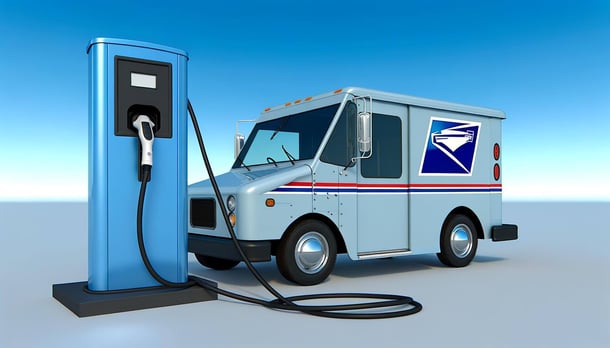9 Mailing Industry Myths
Written at Jun 10, 2024 10:29:03 AM by Justin O'Donnell
Common Misconceptions About the Mailing Industry
The mailing industry has been a cornerstone of communication and commerce for centuries. Despite its long-standing legacy, several misconceptions persist about this essential sector we all depend on. BlueCrest is here to debunk these myths and provide a clearer understanding of the modern mailing industry and why it is so essential today.
1. Myth: Traditional Mail is Obsolete
Reality: While digital communication has grown exponentially, traditional mail remains vital. Businesses still rely on direct mail for marketing, billing, and communication. In fact, direct mail often achieves higher response rates than digital methods. Physical mail has a unique ability to capture attention and engage recipients on a personal level.
- Direct mail has a higher open rate of 80-90%, whereas email has 20-30%.
- Direct mail receives the highest ROI of 112% across all mediums, followed by SMS (102%), email (93%), paid search (88%).
[Source: https://www.postalytics.com/direct-mail-statistics/]
2.  Myth: Mail Delivery is Slow and Inefficient
Myth: Mail Delivery is Slow and Inefficient
Reality: Advances in technology have significantly improved the speed and efficiency of mail delivery. Automated sorting systems, real-time tracking, and streamlined logistics have made the process faster and more reliable than ever. Many mailing services now offer expedited options that rival the speed of digital communications.
3. Myth: The Mailing Industry is Environmentally Unfriendly
Reality: The mailing industry has made significant strides in sustainability. From using recycled materials and eco-friendly inks to implementing energy-efficient practices in facilities, the industry is committed to reducing its environmental impact. Additionally, many companies offer carbon-neutral shipping options and encourage paperless billing to further support green initiatives.
- Switch to recycled paper, which reduces the demand for fresh wood pulp and requires less energy and water.
- Use environmentally-friendly inks, such as soy or vegetable oil based inks, instead of petroleum-based.
- Choose sustainable packaging like biodegradable compostable packaging, like recycled cardboard, or cornstarch-based plastics.
- Invest in modern mail and print solutions that optimize workflow, minimize waste, and increase efficiency.
- Millennials, along with Gen X, are the most likely to actively recycle and think that direct-mail recycling information is important.
- About six in 10 consumers recycle their mail and believe it’s important to see recycling infomation printed on mailpieces.

4. Myth: Mailing is Too Expensive for Small Businesses
Reality: Mailing services can be cost-effective for businesses of all sizes. Bulk mailing rates, targeted mailing lists, and efficient postal services provide affordable options for small businesses. Moreover, the return on investment from direct mail campaigns often justifies the initial costs, making it a viable marketing strategy.
5. Myth: Mail is Not Secure
Reality: The mailing industry has stringent security measures in place to protect sensitive information. From tamper-evident packaging to secure data handling protocols, the industry prioritizes the confidentiality and security of mailed items. Additionally, advancements in encryption and secure tracking have enhanced the overall safety of mail.
 6. Myth: Physical Mail is Less Effective Than Digital Marketing
6. Myth: Physical Mail is Less Effective Than Digital Marketing
Reality: Physical mail often boasts higher engagement rates than digital marketing. People tend to spend more time with physical mail, which can lead to greater brand recall and response rates. Combining direct mail with digital strategies can create a powerful integrated marketing approach that leverages the strengths of both channels.
7. Myth: The Mailing Industry is Outdated and Resistant to Change
Reality: The mailing industry continually evolves with technological advancements and changing consumer preferences. Innovations such as automated mail sorting, predictive analytics, and hybrid mail solutions demonstrate the industry's adaptability. Companies like BlueCrest are at the forefront of these innovations, ensuring the industry remains dynamic and relevant.
8. Myth: Mail is Only for Older Generations
 Reality: While older generations do appreciate mail, younger demographics also value tangible, personalized communications. Millennials and Gen Z, often inundated with digital content, find physical mail refreshing and engaging. Direct mail campaigns targeting these groups can achieve impressive results when crafted thoughtfully.
Reality: While older generations do appreciate mail, younger demographics also value tangible, personalized communications. Millennials and Gen Z, often inundated with digital content, find physical mail refreshing and engaging. Direct mail campaigns targeting these groups can achieve impressive results when crafted thoughtfully.
According to a USPS report, out of all the generations, millennials—also known as Gen Y—have the strongest opinions and feelings about direct mail. For example, more than any other age group, they believe that mail brings a sense of daily discovery and look forward to seeing what deals or coupons are being offered.
Millennials are more likely than any other generation to say that mail:
- Provides useful information
- Keeps them up to date on products and services
- Feels more secure than online digital communications
- Makes them more interested in a brand’s products or services
- Makes them inclined to purchase when a product is advertised
Additionally, 72% of Gen Z say they would be disappointed to no longer receive mail and say they are excited to discover what the mail brings every day.
9. Myth: Direct Mail is Spam
Reality: Unlike digital spam, which can be easily ignored or filtered out, direct mail is often viewed as more trustworthy and credible. Well-targeted and personalized direct mail is welcomed by recipients, especially when it offers valuable content or promotions. Effective direct mail campaigns focus on delivering relevant and meaningful messages to their audience.
Conclusion
The mailing industry is far from obsolete or inefficient. It continues to play a crucial role in communication, marketing, and commerce. By understanding and dispelling these common misconceptions, businesses can better leverage the strengths of traditional mail alongside modern digital strategies. At BlueCrest, we are committed to helping our clients navigate and thrive in the ever-evolving mailing landscape.
Justin O'Donnell
BlueCrest




0 comments